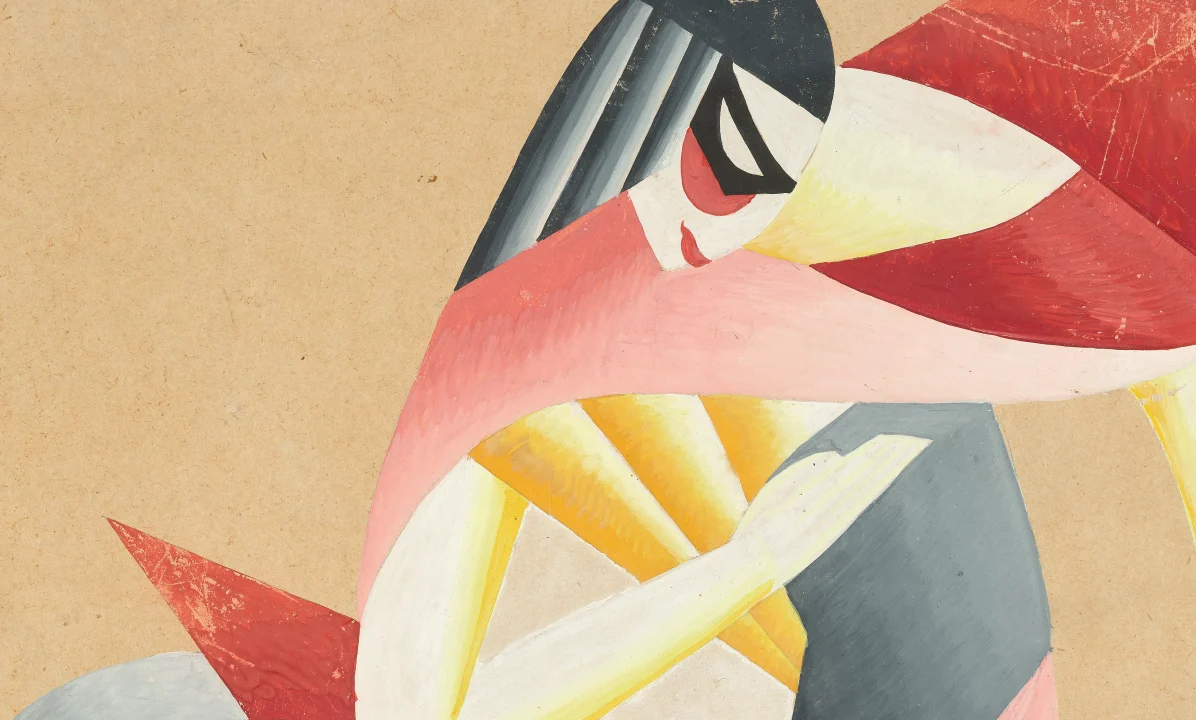In the Eye of the Storm: Modernism in Ukraine, 1900-1930s at the Royal Academy of Arts

At a moment that could hardly be more pertinent, the Royal Academy offers a window into the rich tapestry of Ukraine’s modernist movement, distinctively carved out from its Russian contemporaries. The exhibition, In the Eye of the Storm: Modernism in Ukraine, 1900-1930s, is a show in the UK, bringing together 65 pieces from institutions like the National Art Museum of Ukraine and the Museum of Theatre, Music and Cinema of Ukraine. It spans a spectrum from renowned artists such as Alexander Archipenko and Kazymyr Malevych to lesser-known but equally significant figures like Mykhailo Boichuk or Vasyl Yermilov, each leaving an enduring imprint on both Ukrainian modernism and the broader European artistic landscape.
Set against the dramatic events of World War I, the collapse of empires, the revolutions of 1917 and the fleeting existence of the Ukrainian People’s Republic, the period 1900-1930s was marked by an intense burst of artistic innovation. The exhibition masterfully captures this vibrant era of Ukrainian art, filled with vivid colours, striking geometric landscapes and the poignant faces of those who witnessed their world transform through conflict.
The display is segmented into six sections, each exploring the diverse artistic styles and cultural identities that emerged in early 20th-century Ukraine. Visitors can discover the captivating landscapes by Alexandra Exter and Oleksandr Bohomazov, who shatter conventional perspectives into semi-abstract configurations of swirling colours and sharp geometric lines. Exter’s Composition (Genova), (1912) is a highlight, with buildings portrayed in stark, cubist forms, their outlines melting into a canvas of deep purples, greens and reds. Another standout piece is Volodymyr Burliuk’s portrait of a blue-eyed Ukrainian peasant woman (1910-11), her expression etched with resilience against a backdrop of tears. She stands stoic, her hands clasped and her gaze piercing.
A section delves into the pivotal role of theatre design in Ukrainian modernism, with the contributions of Vadym Meller, Anatol Petrytskyi and more. We learn that amidst the Ukrainian War of Independence (1917-1921), Ukraine experienced a transformative period in theatre production. This was fuelled by the collaboration of avant-garde writers, directors and stage designers, set against the turmoil of battles with the invading Russian Bolsheviks. Look out for Vadym Meller’s sketch of the “Masks” choreography for Bronislava Nijinska’s School of Movements.
Further rooms spotlight the Kultur Lige, fostering a blend of Jewish artistic traditions with the European avant-garde, and trace the artistic evolution through hubs in Kharkiv and the Kyiv Art Institute. A poignant section dedicated to the “Last Generation” confronts the tragic end of independent artistic groups in 1932 under Soviet rule. Here, the promising efforts of the modernists were tragically cut short, as Stalinist purges led to the execution of Mykhailo Lvovych Boychuk and many others. We are left with the work of the last students of Kyiv’s institute, marking the point at which Soviet Realism became the only official artistic style.
The curators of this exhibition have beautifully set this collection apart from the traditionally perceived “Russian avant-garde”. The show stands out as uniquely Ukrainian, offering visitors a profound appreciation for the vibrancy and breadth of Ukrainian artistic life during that time. The final room features Oleksandr Bohomazov’s Sharpening the Saws (1927), a vivid depiction of labourers using their tools against sharp, bright colours. The huge saws seem to pierce beyond the canvas, reaching out to the viewer. Other pieces not to miss are Mykola Kasperoych’s touching portrait of a young girl, and Davyd Burliuk’s Carousel (1921), a dazzling swirl of colour bursting with dense and varied impasto.
Though not all works are masterpieces, the exhibition breathes a refreshing perspective into the narrative of European modernism. It reveals the relentless pursuit of Ukrainian artists to define a national artistic identity, in defiance of overwhelming adversities. More than just an artistic showcase, In the Eye of the Storm stands as a testament to resilience and solidarity with Ukraine’s enduring spirit.
Constance Ayrton
Image: Courtesy of the Royal Academy of Arts
In the Eye of the Storm: Modernism in Ukraine, 1900-1930s is at the Royal Academy of Arts until 13th October 2024. For further information visit the exhibition’s website here.























Facebook
Twitter
Instagram
YouTube
RSS